Many people’s attention has recently been drawn to the odd and distinctive designer dog known as the Catahoula Blue Heeler mix breed.
It is a relatively recent mixed breed, and it’s interesting because it came from two parent breeds whose homes are very distant.
The Catahoula Leopard dog is from Louisiana, while the Blue Heeler first originated from Australia. The latter is often misidentified as an Australian Shepherd mix, but they are very different, even though they have the same place of origin and a similar role.
With that in mind, we’ve written this comprehensive breed guide, in hopes that it will help you learn a bit more about this fascinating designer dog.
About The Catahoula Blue Heeler Mix

This designer dog is a very fascinating breed, characterized by its high levels of activity, fierce loyalty, and a combination of excellent herding and guarding abilities.
It was created when breeders choose to cross an Australian Blue Heeler with a Louisiana Catahoula Leopard Dog.
It is one of the many existing Blue Heeler mixes.
Although Blue Heelers and Catahoulas are quite different breeds, they do share many common traits. They both behave in a way that is really aggressive and strong.
A Catahoula Blue Heeler mixed breed is usually exceptionally active, alert, and energetic due to the high-spirited nature of its ancestors, which makes it an excellent watchdog to keep by your side.
History Of The Catahoula Blue Heeler Mix
The Catahoula Blue Heeler mix is the product of two distinct herding dog breeds.
However, they have a lot in common, because they were both bred in a similar context and for extremely similar roles, to help out on cattle ranches and farms by herding up sheep, cows, and other cattle.
Because of this, both of those breeds have a relatively similar temperament, and it’s only logical to assume that their offspring does, as well.
That being said, let us now examine the background of its parent breeds.
The Louisiana Catahoula Leopard Dog
The earliest known ancestors of modern Catahoula dogs, according to the American Kennel Club (AKC), are the wild dogs of Louisiana, the so-called Wolf Dogs.
These native dogs were bred with the bloodhounds, mastiffs, and greyhounds that the Spanish explorers brought with them during the early colonization days.
These adorable dogs have a single coat that can be any color, frequently bicolor or multicolored, and is speckled or spotted all over. They frequently have heterochromatic eyes, which could mean, for example, that one eye is blue and the other is brown.
The remarkable work ethic and the natural tendency for herding of the Catahoula Leopard dogs make them proud members of the working dog group, but they have also been known to be used as service dogs.
They get along well with other dogs and children, and they are devoted to their families. But because they are such ferocious watchdogs, they need a lot of instruction and early socialization.
Read next: The Catahoula Pit Mix: A Mix You Never Heard Of Before
The Blue Heeler
There are numerous names for Blue Heelers. They are known as Queensland Heelers, Hall’s Heelers, Australian Cattle dogs, or simply Heelers.
The Australian Cattle Dog is a strong, courageous, double-coated and energetic breed native to that country. The blue variant is the predominant one, but there is also a red one, typically called the Red Heeler.
The Blue Heeler and Catahoula Leopard dog have a lot in common. Early Australian settlers wanted strong, active, and smart herding dogs, thus they produced these pups. The breeds they brought with them initially found the outback of Australia an unfriendly place to live.
However, those rough conditions were nothing for the Blue Heeler temperament.
To create the ideal herding dog, Aussie drovers mixed some of the toughest herding breeds with indigenous wild dogs, and thus, Blue Heeler dogs were born.
Catahoula Blue Heeler Mix Appearance

Mixed dog breeds usually don’t have a strict breed standard that outlines how they are supposed to look. This is one of the ways that they differ from purebred dogs.
That means that there isn’t a singular set appearance for Catahoula Heelers.
However, there are still some features that most of these dogs will share.
That mostly refers to their frame, which is typically muscular and strong, but it can also include some common traits in the patterns of their coats.
Catahoula Blue Heeler Mix Size And Weight
These dogs are considered to be a medium-sized dog breed, which is a body type that is perfect for their herding duties that require a good combination of power and agility.
When they reach adulthood, they are about 19 to 26 inches (48.3 to 66cm) tall and weigh in the range of 45 to 85 pounds (20.4 to 38.6 kg).
Roughly speaking, that is about the same size as a German Shepherd or the Blue Heeler.
However, a healthy lifestyle and appropriate nutrition are required for this breed to grow to the anticipated height and weight, regardless of gender.
Catahoula Blue Heeler Coat Colors And Types
These dogs have a single, short coat that comes in a variety of colors, including blue, red, white, and black. However, even though their coat is short, they are not considered hypoallergenic.
These different coat shades create some lovely patterns on the Catahoula Heeler’s body. It can have circular leopard patches, spots, or brindles.
Additionally, its fur might be mottled with blue like its Blue Heeler parent, or it might have different types of spots like its Catahoula Leopard dog parent.
The density and shedding of your pup’s short, smooth coat may vary. If your puppy resembles the Heeler parent more, its shedding will be greater.
Heterochromia
The Catahoula Blue Heeler mix dogs are known for having different colored eyes, which is an occurrence known as heterochromia.
A Catahoula Heeler could have one blue eye, and the other green or brown, for example.
Related: Dog Eye Color Chart: 7 Mesmerizing Shades
Some of them also have so-called cracked eyes, which are eyes with two different hues inside of them, or eyes that are multicolored.
Catahoula Blue Heeler Mix Temperament
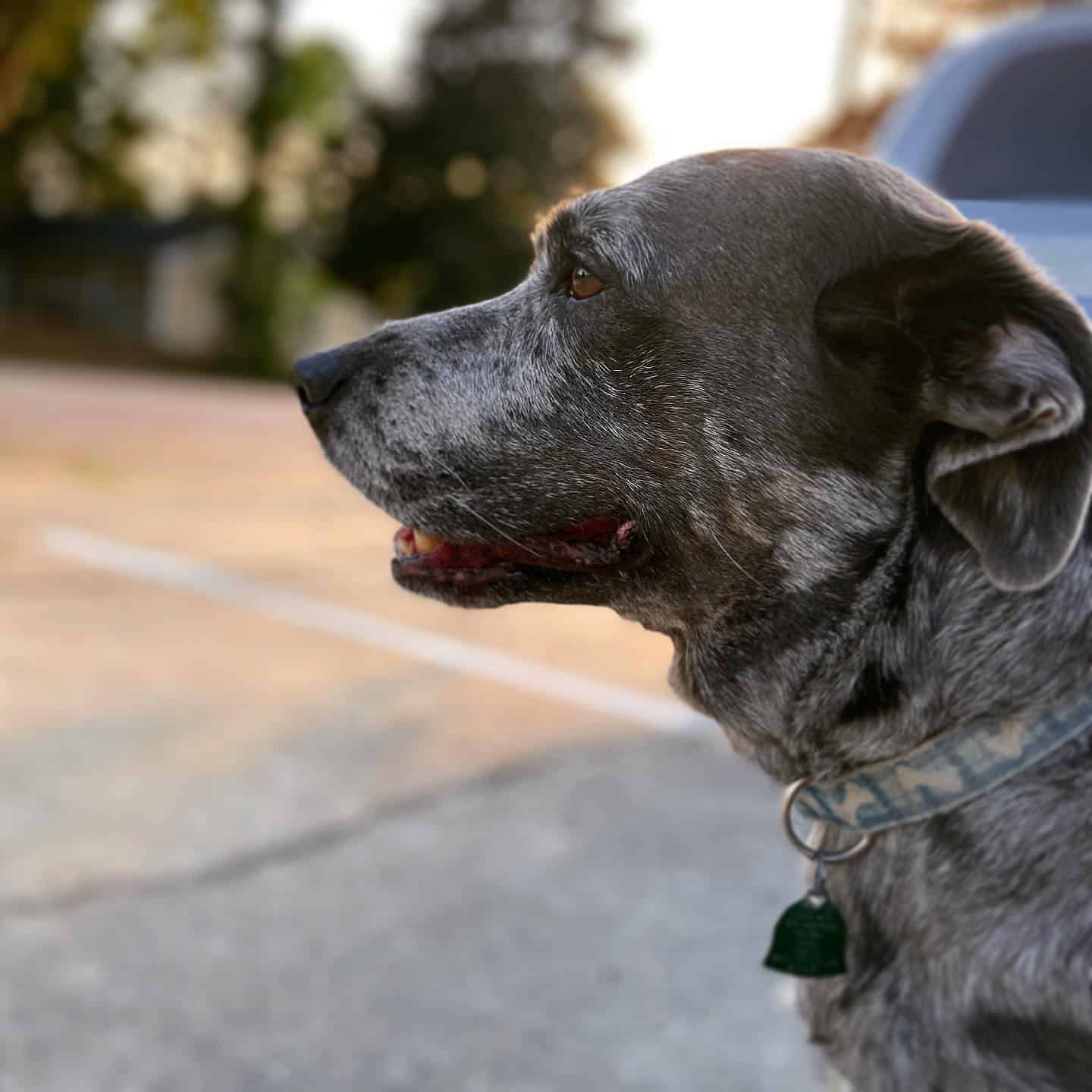
This hybrid breed is highly attentive, clever, guarding, loyal, and affectionate.
It’s in their nature to be aggressive and territorial. A Catahoula Heeler might even hurt a person, particularly if they appear strange. Additionally, they thrive when they are the only pet in the home.
As a result, Catahoula Heelers should be raised in a social environment to avoid the emergence of undesirable habits and destructive behavior.
A Catahoula Heeler appreciates completing tasks as a working dog and may become frustrated if they are unable to do so.
If they are left alone for an extended period of time, they may experience separation anxiety, which may cause them to act out destructively. In order to be busy and engaged all the time, a Catahoula Heeler needs a lot of mental and physical stimulation to satisfy their energy levels.
Catahoula Blue Heeler Mix Training And Socialization
Blue Heeler Catahoula mixes require gentle authority-establishing techniques and reward-based reinforcement to assure cooperation.
They might be challenging for new owners, but with the appropriate training technique, things will be much simpler.
Therefore, as soon as your Catahoula Heelers turn eight weeks old, you should begin training them at home or send them to professional classes if you want to bond with them.
If you choose to train them at home, be ready for their stubbornness. To ensure cooperation, you must progressively impose your authority and employ rewards.
Bring a lot of extra patience because they could be challenging for new owners to cope with.
Catahoula Blue Heeler Mix Health
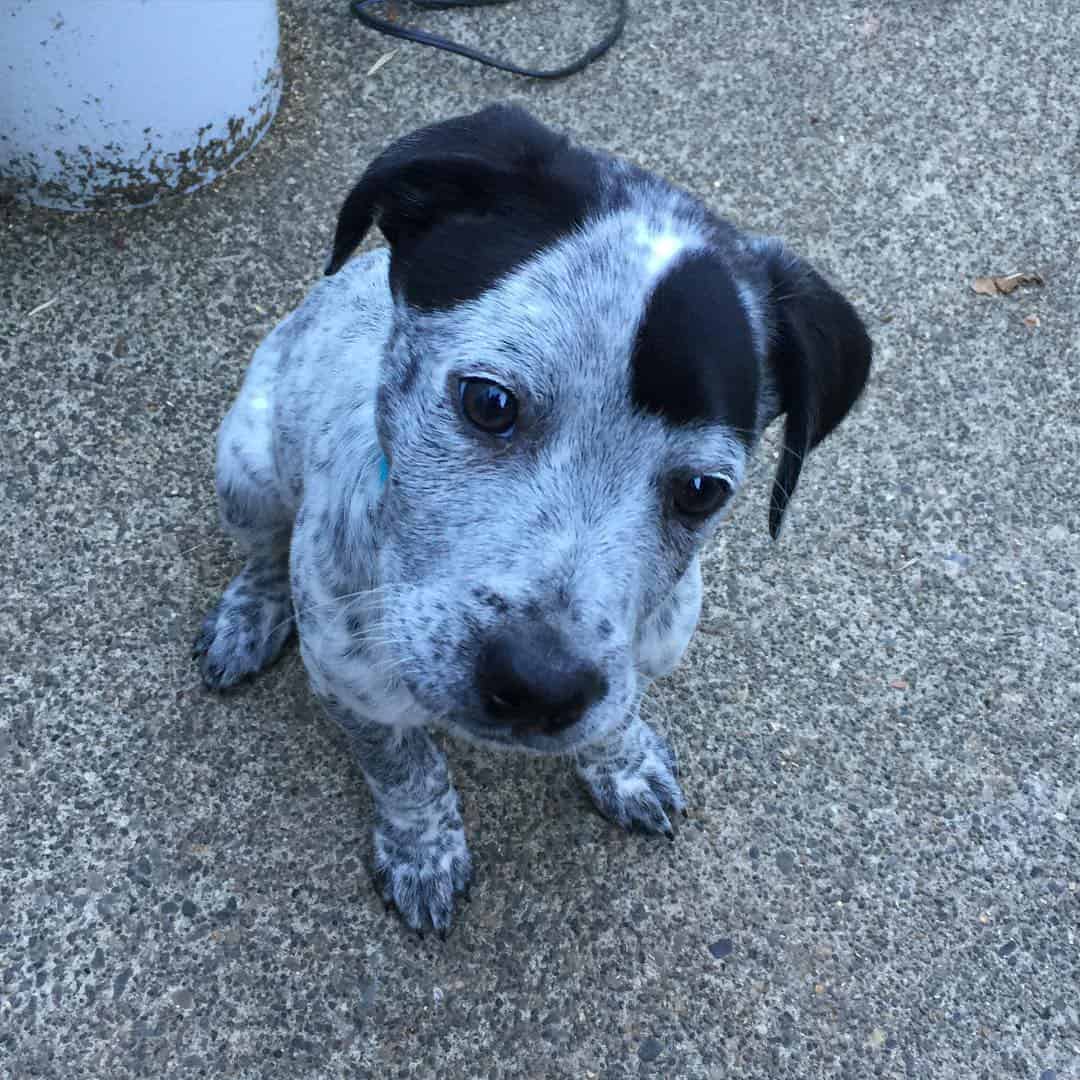
Both of the parent breeds have a reputation for being relatively healthy canines, which is something they pass down to their mixed offspring.
A healthy Catahoula Blue Heeler mix has an average lifespan of ten to 15 years.
Crossbreeding, in the opinion of the majority of breeders, lowers the risk of health issues. However, some dogs still have a chance of inheriting genetic health issues from one or both of their parent breeds.
Common Health Issues in Catahoula Blue Heeler Mixes
The health problems listed below are some that your Catahoula Heeler may experience. We strongly advise getting in touch with your dog’s breeder or veterinarian if you’re interested in learning more about the specific health issues that your dog is predisposed to.
It’s important to know what kinds of health problems your dog is predisposed to. Health issues might affect your way of life and your finances.
It is advised to take your dog to the vet frequently to prevent potential issues. Another smart move is to cover your dog with pet insurance.
Hip Dysplasia
In medium to large-sized dogs with hip dysplasia, the thigh bone does not fit securely into the hip joint. Catahoula Heelers are susceptible to hip dysplasia because they typically fall within this size range, which is the most frequently affected one.
Elbow Dysplasia
The disorder known as elbow dysplasia causes arthritis and lameness because the elbow joint is not properly formed.
Much like hip dysplasia, it most commonly affects medium-sized and large dog breeds.
Blindness
Your puppy can be partially or totally blind at birth. Over time, it can also develop blindness. It is an incredibly sad thing to befall a dog and it makes its life complicated and difficult.
Fully blind dogs require a lot of extra care and attention, and should only be owned by experienced and patient dog owners.
Deafness
The worst genetic defect connected to the parent breeds of the Catahoula Blue Heeler hybrid is deafness.
This disease typically doesn’t manifest until a puppy is three or four weeks old, but when it does, it can cause anything from partial to complete deafness.
Progressive Retinal Atrophy
A genetic condition called progressive retinal atrophy (PRA) renders dogs like the Catahoula Heeler mix blind. Unfortunately, this health issue can affect either parent breed and it is inherent in nature.
Diabetes
The Catahoula Heeler is one of several canines that suffer from diabetes mellitus. The regulation of glucose levels is thrown off by this disease.
Sadly, diabetes can be fatal, and although it cannot be permanently cured, it can be effectively managed with daily insulin injections.
Glaucoma
Catahoula Heelers can occasionally get glaucoma and cataracts, among other eye disorders.
Glaucoma is usually the most common one, and it is brought on by inadequate drainage of eye fluid and can injure the retina and optical nerve.
Patellar Luxation
A dog’s kneecap dislocating results in a medical condition dubbed patellar luxation. Any breed of dog can develop a luxated patella, although small or toy types like Chihuahuas are more susceptible to it.
Given how both of the parent breeds, in this case, the Catahoula Leopard dog and the Blue Heeler, are typically medium-sized, their crossbreed isn’t as likely to develop patellar luxation, however, there is still a slight risk.
In some circumstances, surgery may be required, especially if your dog’s illness is severe and causing it a lot of pain.
Bloat
If left untreated, bloat is a dangerous disorder that can be fatal.
When a dog’s stomach gets overfilled with food or gas, it can sometimes twist around itself and remain in that position. Bloat is the result of that and it can develop in the dog’s body swiftly and without prior notice.
Cancer
Cancer is the most common cause of death in pets over the age of ten, with one in four canines receiving a diagnosis at some point in their lives.
Similar to human cancers, some cancers in dogs are more prevalent than others. Fortunately, many dogs with cancer can still lead fulfilling lives with the right care.
Catahoula Blue Heeler Mix Diet And Exercise
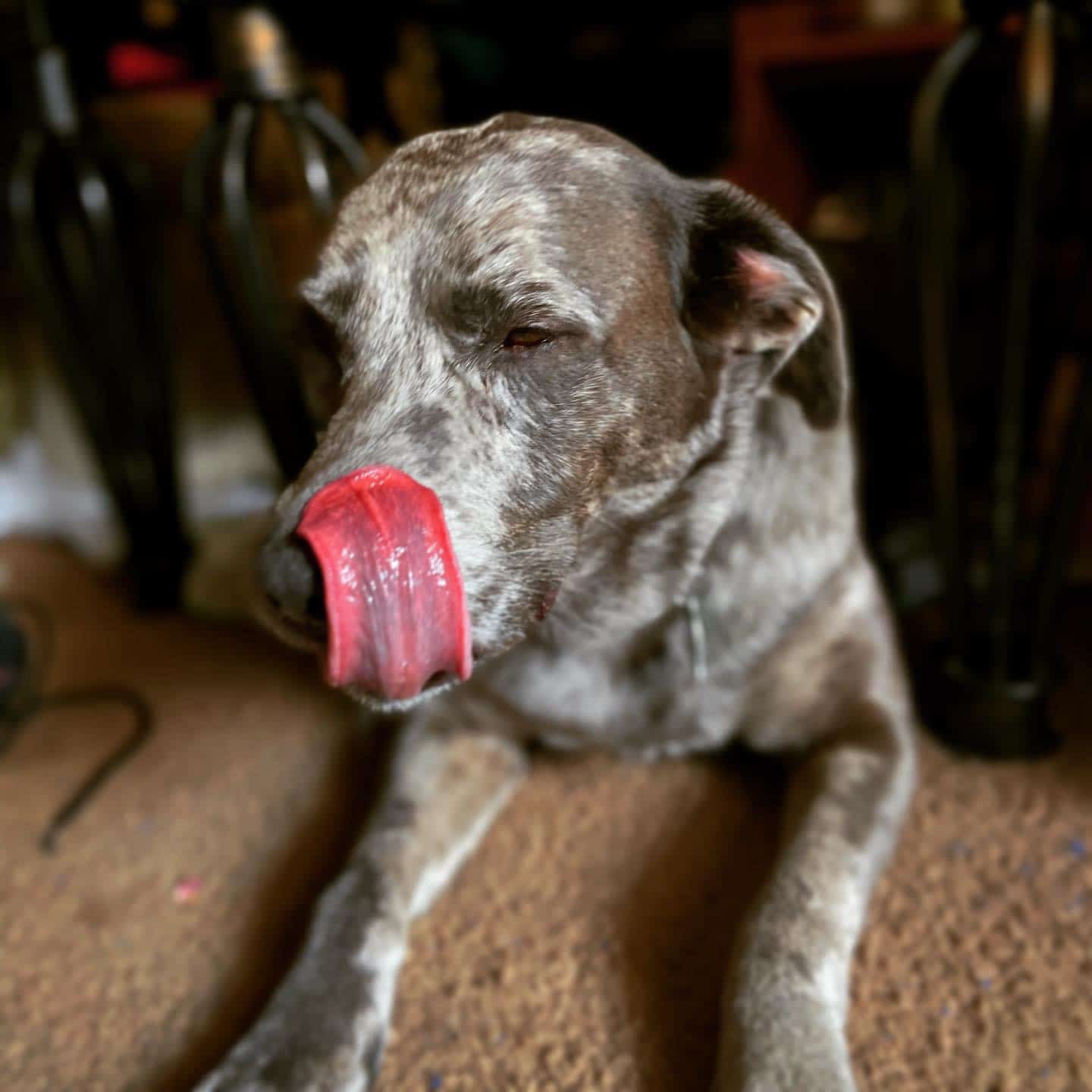
You want to be sure that your dog is getting the best care possible as a dog owner. Therefore, researching and studying this breed is essential if you want to make sure that your dog is in a suitable environment.
You must have a thorough understanding of how to take care of your dog before you do anything else. Instead of being seen as a chore, dog ownership should be enjoyed by both you and your dog.
The next thing you should do is put these strategies into practice successfully. So let’s start by breaking down how to take care of your Catahoula Heeler to give you an idea.
Arguably the most important aspects of dog care, at least on a day-to-day basis, are its diet and exercise.
Diet
Every dog should have a constant diet of high-quality food. However, the important issue here is how these foods will maintain a healthy weight for your dog.
It is advised to feed Catahoula Heelers a high-protein diet to maintain their active lifestyle. They thrive on a raw diet or premium kibble. Because it can cause weight gain, wet food is not the ideal option.
Three to five cups spread over two meals is said to be the daily serving quantity advised for a Catahoula Heeler.
However, this estimate may vary based on a number of variables, such as their metabolism, the quality of the dog food, their lifestyle, their weight, and their age.
You should pay special attention to your Catahoula Heeler’s general weight and appearance as you would with any diet modification.
In this manner, you’ll be able to determine whether the alteration is successful or whether it results in any undesirable side effects and complications.
Exercise
A high-energy breed such as the Catahoula Blue Heeler mix requires a lot of physical activity, as well as mental stimulation. In addition to regular walks, they should engage in intense play that challenges them physically and mentally for at least an hour each day.
You can maintain this schedule over a long period of time, in order to increase their flexibility, build stronger muscles, and make them happier.
Catahoula Blue Heeler Mix Grooming
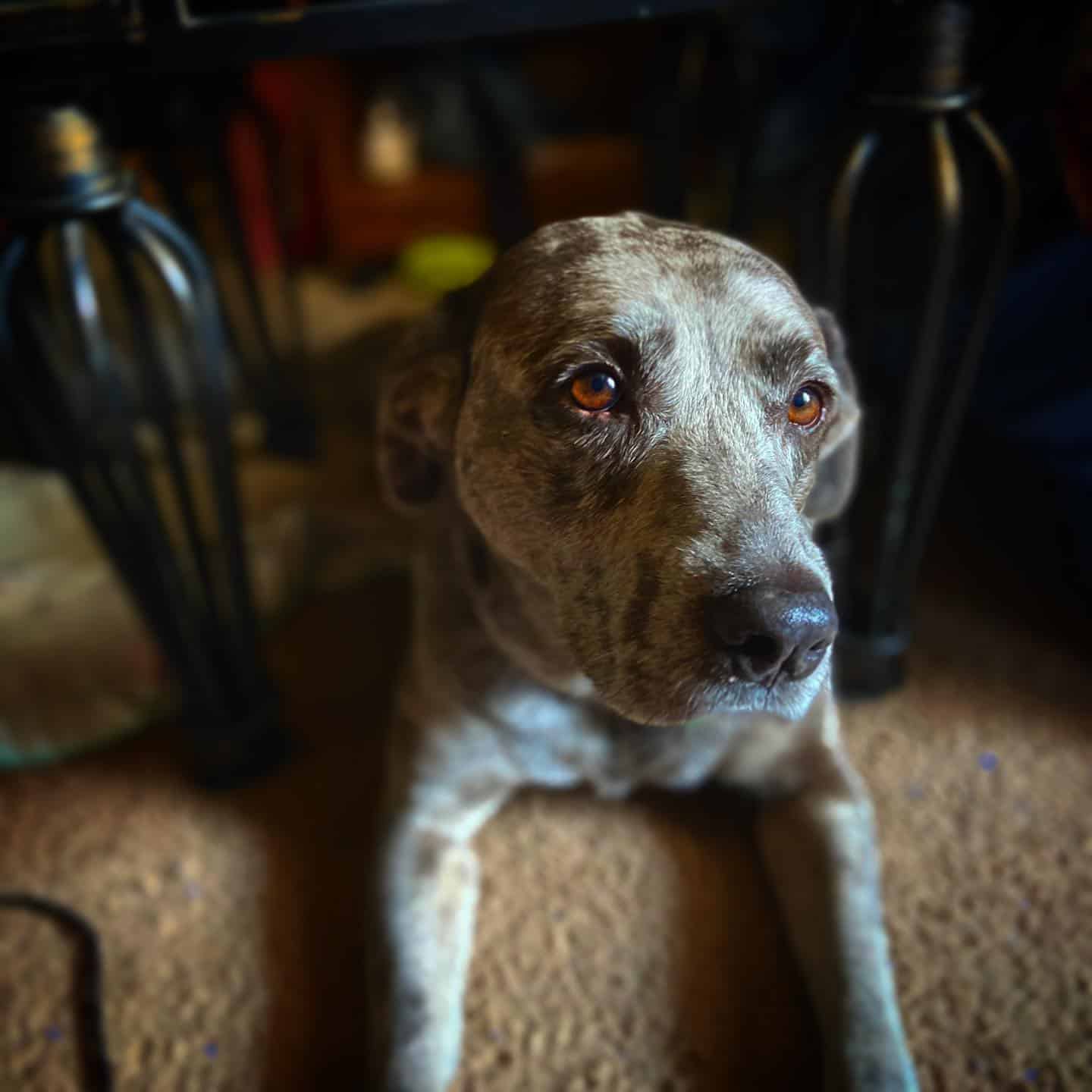
In addition to making your Catahoula Heeler look better, proper grooming will prevent illnesses and skin infections.
Regular bathing, ear cleaning, and nail clipping will raise their self-confidence and shield them from dirt that might cause their allergies.
Be careful, though, because too frequent bathing dries out their skin, which leads to more dandruff and shedding. The finest method for grooming and cleaning your Catahoula Heeler is to brush them frequently.
To spread the natural oils in their skin, brush their coat in the direction of hair growth for optimal results.
It’s also crucial to invest in a high-quality de-shedding tool to get rid of the undercoat furs before they shed because they can be heavy shedders.
Brushing their teeth at least once a day can help avoid tartar, bad breath, and gum disorders because these dogs will nibble on whatever they see when you’re not paying attention.
Catahoula Blue Heeler Mix Cost
The starting price range for these puppies is between $600 and $900 when you’re buying from a reputable breeder.
However, you can get sometimes get them for an even lower price (around $300 to $450) if you look in various dog shelters or rescues.
Although these rescue puppies are less expensive, they are not guaranteed to be spayed or neutered and may not have received their shots. What’s worse, they may also have a history of health problems.
In any case, you’ll still need to have extra cash set aside for early expenses after you bring your Catahoula Heeler home in addition to the price of your puppy.
Related: The Top 10 Best Blue Heeler Breeders In The U.S.
Catahoula Blue Heeler Mix FAQ
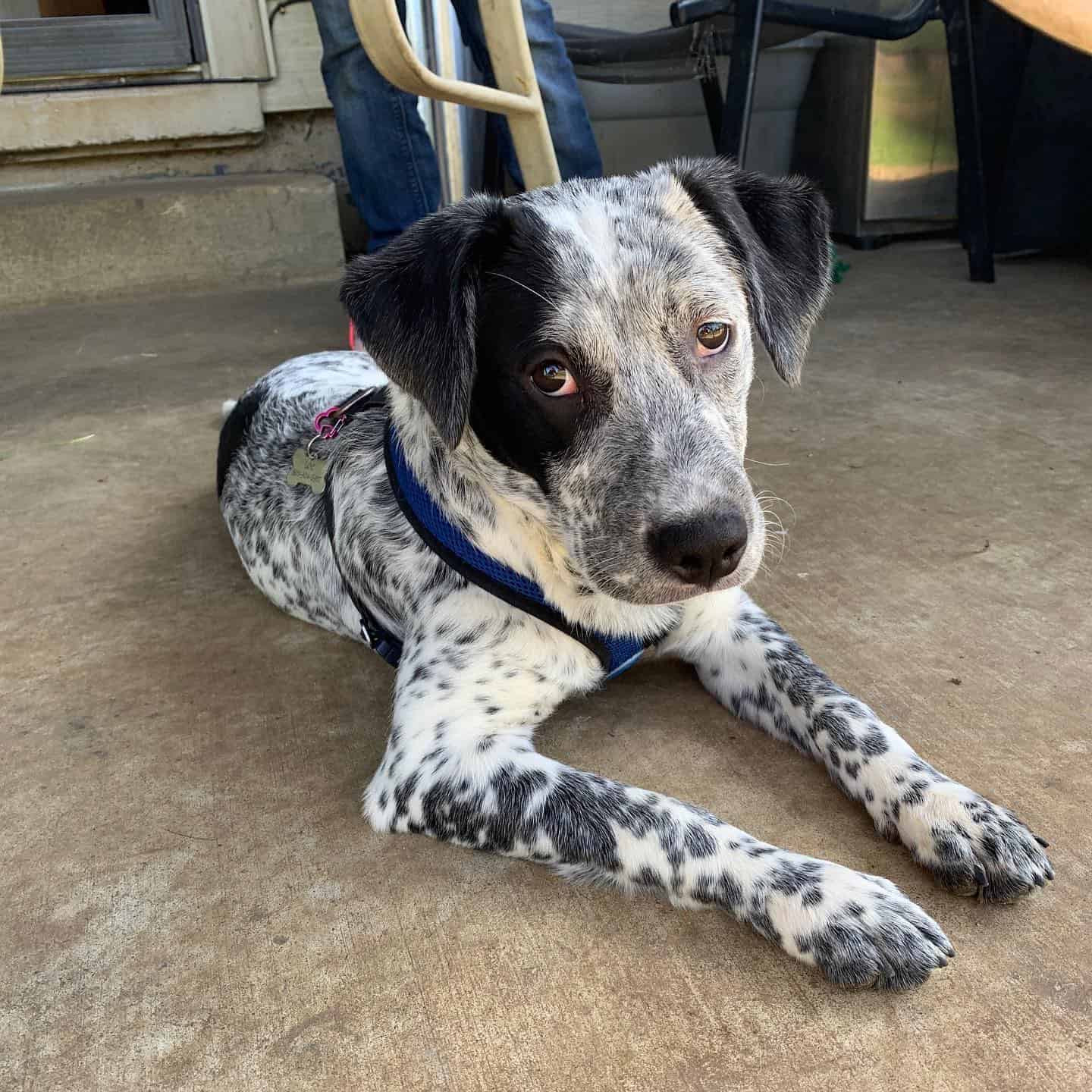
After covering some of the most important aspects of buying and owning a Catahoula Blue Heeler mix in the article so far, now it’s time to turn to some frequently asked questions about this breed.
Are Catahoula Blue Heeler Mixes Aggressive?
Catahoulas are traditionally herding dogs that are forceful and devoted to their flock. The Catahoula Heeler might acquire this personality feature.
Additionally, they might attempt to round up adults, kids, and other animals by treating them like cattle. As a result, it is wise to keep a close eye on them while they are among other people or animals.
How Much Do Catahoula Blue Heeler Mixes Shed?
Depending on whose parent breed is more prominent, Catahoula Heelers will shed more or less. Blue Heelers normally shed significantly more than Catahoulas.
Regardless of which parent breed is predominant, Catahoula Heelers may shed in moderate to high amounts during the shedding season. Use de-shedding equipment to reduce the amount of dead fur as much as possible
Are Catahoula Blue Heeler Mixes High Maintenance?
Very minimal upkeep is required for the Catahoula Heeler.
You’ll be astounded at how shiny and clean their coat can be with just a weekly brushing. While a Catahoula Heeler may require washing, it is advised to bathe them less frequently or only when necessary.
When you do eventually bathe them, use an appropriate dog shampoo.
Final Thoughts
The Catahoula Blue Heeler mix is a special breed of dog with an interesting history and formidable working prowess. New owners or those who lead sedentary lifestyles are probably not the right fit for this highly active breed.
Generally speaking, there isn’t a right or wrong puppy. However, to determine whether a Catahoula Blue Heeler mix puppy fits your lifestyle and personality, you must take into account a few aspects.
If you want to make the best choice for you and your chosen pup, you must do extensive research, reading, learning, and deliberating before you finally make your decision. This is especially true for first-time pet owners.
That’s why we’ve created this hybrid dog breed guide, to serve for informational purposes to all pet lovers in general, but particularly for people looking to adopt one of these active dogs.
Read Next: The Catahoula Australian Shepherd Mix: A Hardworking Beauty
